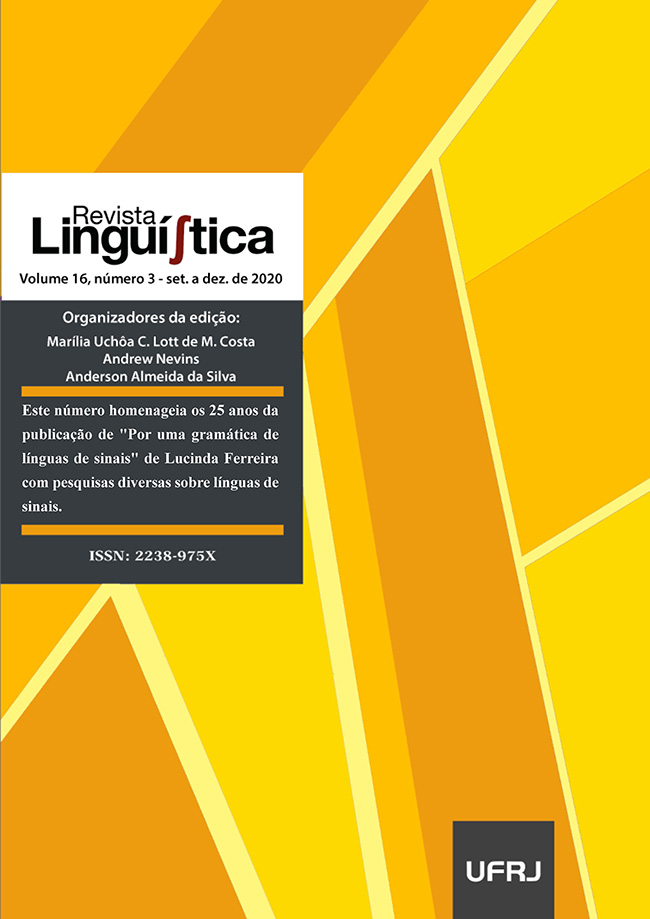Reference switching in sign and speech: grammatical and discourse features across modalities within signed-to-spoken language interpretation
DOI:
https://doi.org/10.31513/linguistica.2020.v16n3a37192Keywords:
reference, pronouns, role shift, constructed action, handedness, interpretation.Abstract
Human languages contain a variety of tools for referencing agents, locations, arguments of predicates, and other entities that are introduced, described, and attributed actions within sentences. While there are similarities across modalities, there also exist notable differences. For example, signed languages are articulated with two hands, and sometimes one of them serves referencing functions while the other produces complementary signs. Additionally, signers use role shift and constructed action extensively, whereas there is comparatively less use of reported speech and co-speech enactment in spoken language discourse. Differences across modalities such as these provide areas of focus for studies of interpretation, since a common theoretical premise is that interpreters should disengage from the form of a source-language message in order to provide the meaning in the target language (with its own form). It is open to debate whether an interpretation can achieve complete semantic equivalence, given differences in the grammars, lexical items, and discourse features of the source- and target-languages. We use Libras texts interpreted into Brazilian Portuguese to examine various types of referencing in language and how it occurs in such texts. Our analysis is intended to raise questions about referencing and interpretation that merit in-depth study.
---
Original in English.
Downloads
Published
Issue
Section
License
Authors who publish in the Revista Linguí∫tica agree with the following terms:
The authors maintain their rights, ceding to the journal the right to first publication of the article, simultaneously submitted to a Creative Commons license permitting the sharing with third-parties of published content as long as it mentions the author and its first publication in the Revista Linguí∫tica.
Authors may enter into additional agreements for the non-exclusive distribution of their published work (for example, posting in online institutional or non-profit repositories, or book chapters) so long as they acknowledge its initial publication in the Revista Linguí∫tica.

The journal Revista Linguí∫tica is published by the Post-Graduate program in Linguistics of UFRJ and employs a Creative Commons - Attribution-NonCommercial 4.0 International (CC-BY-NC).









